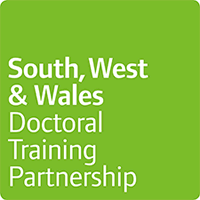Start your application here: https://www.sww-ahdtp.ac.uk/prospective-students/apply/
This project focuses on astronomy’s visual heritage as preserved in the archives at the Norman Lockyer Observatory (NLO), in Sidmouth, Devon. Towards the end of the 19th century, astronomers started replacing the human eye and the hand-drawn illustration with the photographic plate as a detection device for recording celestial images and stellar spectra. Photographic plates provided a permanent record that could be analysed in an objective and reproducible way. Sir Joseph Norman Lockyer (1836-1920)—co-discoverer of Helium and founding-editor of the journal Nature—was one of the pioneers who adopted and transformed this imaging technique. Comprising thousands of photographic plates (Lockyer’s own and some by his contemporaries and successors), the NLO’s extensive archive is a unique resource for the history of astronomical imaging, constituting a ‘diverse and rich’, but underutilized, ‘data set’. Historical plate collections ‘operate as time capsules’. Because the NLO remains undigitized, it is less studied than some other collections (e.g., Harvard’s Astronomical Photographic Plate Collection), yet is nevertheless a rich resource of historical data. Central to this project are methods relating to the material specificity of the NLO plate archive, which comprises roughly 6,000 spectral plates and historical lantern slides. Plates include pictures of stars and nebulae, as well as eclipses and astronomical expeditions. Recent additions to the collection include images of early aircraft, ballooning, motoring, portraits and group photos. Alongside images recorded on glass, the spectrum plate collection contains records of the wavelengths and intensities of spectral lines (the chemical elements present in stars). Spectrum plates have handwritten information concerning the object, telescope, operator/astronomer, date, time, exposure duration and other data. NLO plates are accompanied by a basic index (from 2003). The handling and evaluation of plates as fragile objects containing data in specific formats will thus form an important part of the methods for the project, as will an ability to cross-reference glass-plate data within the collection and from other collections, as well as against other forms of historical material (e.g., contemporary scientific texts, observation notes).
The project will be the first to offer sustained historical and ‘textual’ analysis of this image archive. It will facilitate a deeper understanding of Lockyer’s contribution to the visual culture of late-Victorian astronomy. The doctoral student will have the opportunity for extensive archival work at the NLO and will be able to cross-reference NLO archives with materials from Exeter’s special collection of Lockyer resources (including letters and research papers). There is thus a unique opportunity for the PhD student to make original discoveries in a rare and wonderful archive of astronomical images. The under-examined and extensive nature of the NLO collection provides significant scope for a PhD student to develop original and individual research questions. The variety of image plates and of objects recorded presents similar opportunities for tailored research: from work on Lockyer’s reproductive techniques or annotation procedures, to research into expedition images or spectrum data.
The project’s supervisory team combines expertise in the history of astronomy and visual culture with experience in the technologies of science in the 19th century and specialist knowledge of the NLO archival collections. Professor Jason Hall (Exeter) has written widely on 19th-century technologies; Professor Martin Willis (Cardiff) is an expert on Victorian visual cultural and astronomy; David Strange (director of the NLO) is an experienced astro-photographer and historian of astronomy with 40 years involvement in astronomy outreach.

 Continue with Facebook
Continue with Facebook



